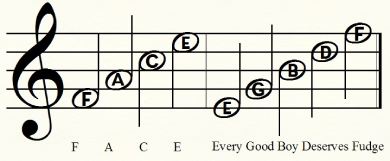Learning music theory may seem like a daunting task, but it doesn’t have to be. Even seasoned musicians can benefit from expanding their understanding of music theory.
Learning music theory opens up new creative opportunities and helps you think about how you want to express yourself through your instrument. Learning the fundamentals of music theory doesn’t take long, but it does require practice and commitment.
The more you put into learning it, the more you get out of it. This guide will provide an overview of music theory with helpful tips on how to effectively learn this subject.
What is Music Theory?
Music theory is basically an in-depth look at how music works. It explores the tools and techniques composers have used throughout history to create music.
You can break music theory into two categories: compositional and improvisational.
Compositional music theory involves exploring how music is constructed, including instruments, scales, chords, melody, and harmony.
Improvisational music theory takes these concepts and applies them to the act of improvising.
Understanding music theory is essential for any musician, regardless of their skill level. Whether you’re an aspiring beginner or a seasoned pro, you can always benefit from expanding your knowledge of music theory.
The more you know about music theory, the more you’ll understand about music and what you can do with it.
You’ll be able to communicate your ideas more effectively and create pieces that resonate with listeners. The types of music you can create will be endless and you’ll have more fun with the process than ever before!
Why Should You Learn Music Theory?
Learning music theory is one of the best ways to expand your creative potential. It gives you insight into how music works, so you can create your own pieces with confidence.
When you understand music theory, you’ll be able to create music that sounds well-planned and thought-out. When you improvise, you’ll sound like you know what you’re doing as you have more tools to express yourself.
Knowing how music is constructed will also help you understand why certain pieces work and why others don’t.
You’ll have the knowledge to deconstruct music and appreciate it on a whole new level. You’ll be able to identify what makes certain pieces stand out, while others blend in with the background noise.
Learn to Recognize the Most Common Notes
If you can recognize the most common notes, you’re already well on your way to understanding music theory.
Notes are the building blocks of every single piece of music. Without them, there would be no music at all. Notes are represented by symbols and each one has a particular sound, duration, and pitch.
There are seven different notes in the western music scales: the tonic, the supertonic, the mediant, the subdominant, the dominant, the submediant, and the tonic.
The tonic is the note that a song begins and ends on, while the submediant is the note that is one semitone below the tonic.

Knowing these different notes will help you understand how scales are created. Scales are made up of particular notes and are the backbone of practically every piece of music.
Music theory is all about understanding how different scales (notes) fit together and how they sound when put together in certain ways.
When you can identify the most common notes, you can create and understand scales. This will help you understand the structure of different pieces of music, allowing you to create your own compositions with confidence.
You’ll be able to create music that sounds well-thought-out and planned, regardless of whether you improvise or write a piece from scratch.
Learn to Recognize the Most Common Chord Progressions
At some point, every musician will come across chord progressions. They’re a fundamental part of music theory and are often used in harmony to create catchy melodies.
Chord progressions are a series of chords played one after another. They’re commonly used to accompany melodies and add depth and emotion to a piece.
There are 12 common and most used chord progressions in music:
| Name | Progression | Example |
| Most Popular Progression | I-V-vi-IV | C-G-Am-F |
| Western Music I | I-IV-V-IV | C-F-G-F |
| Western Music II | I-IV-V-V | C-F-G-G |
| Jazz Progression | ii-V-I | Dm7-Gd7-Cmaj7 |
| 12-Bar Blues | I-I-I-I-IV-IV-I-I-V-IV-I-I | C-C-C-C-F-F-C-C-G-F-C-C |
| Do-wop | I-vi-IV-V | C-Am-F-G |
| (Pachelbel’s) Canon | I-V-vi-iii-IV-I-IV-V | C-G-Am-Em-F-C-F-G |
| Circle of Fifths | vi–ii–V–I | Am–Dm–G–C |
| Turnaround | I−vi−ii−V | C-Am-Dm-G |
| Koakuma/Royal Road | IVΔ7-V7-iii7-vi | FMaj7–G7–Em7–Am |
| Jpop/Jrock | IV-V-iii-vi (ii-V-I) | F-G-Em-Am (Dm-G-C) |
| Rock Turnaround | I-bVII-I | C-Bb-C |
When you learn to recognize these, you’ll understand how songs are put together and how to add depth to your own pieces. This will give your music more purpose and will allow you to create more meaningful pieces.
Chord progressions are often used in popular music and sound familiar, even if you can’t place the specific song. Knowing which chord progressions are most common will help you identify the songs you love.
Learn to Identify the Most Common Intervals
Intervals are the distance between one note and another. They are the second building block of music theory, after notes themselves.
There are many different types of intervals, but you don’t need to know them all to understand music theory. You only need to know the most common intervals to get started.
The following intervals are the most common in western music theory: the minor third, the perfect fourth, the perfect fifth, the major third, the major sixth, the minor sixth, the minor seventh, the major seventh, and the octave.
Learning the names of the most common intervals will help you understand how scales are created.
Scales are made up of specific intervals, which are then played out in a particular order. Knowing the names of most intervals will help you understand how scales are created and will allow you to create your own.
Review Everything!
Once you’ve learned the fundamentals of music theory, you need to review everything you’ve learned. Practice makes perfect and the only way you’ll retain the information is by reviewing the basics over and over again.
You should regularly review the most common notes, common chord progressions, and most common intervals to stay grounded in the fundamentals of music theory.
Reviewing these basics often will help them sink in and become second nature. This will allow you to focus on creating new music and using these fundamentals to create incredible pieces.
When you review the fundamentals of music theory, you’ll be able to create music that sounds well-planned and thoughtful. You’ll also be able to understand other pieces of music on a whole new level.
You’ll be able to deconstruct music and appreciate it on a whole new level. You’ll be able to identify what makes certain pieces stand out, while others blend in with the background noise.
Most importantly, you’ll have more fun with the process and get more out of the music you love so much!
Learning Tools for Music Theory
Learning and practicing music theory is what makes it stick and readily available in your brain when you create music. There are a few methods that can be done to improve music theory skills: ear, scale, and chord training.
Ear Training
Ear training is a vital part of music theory and refers to the ability to identify pitches. Learning intervals is the best way to improve your ear training, but it can be difficult to do on your own.
Ear training apps make it easy to practice intervals on your own time and at your convenience. They’re great for beginners and seasoned pros; everyone can benefit from ear training.
Scale Training
Scales are the most important part of music theory and determine the sound of a piece of music. They’re comprised of specific notes and can be created in many different ways.
Scales apps allow you to practice scales and experiment with different ones. You can also use them to learn to create your own unique scales.
Chord Training
Chords are another vital part of music theory and the foundation of most popular songs. They’re comprised of specific notes and can be played in many different ways.
Chord apps allow you to experiment with different chords and experiment with creating your own. This is a great way to expand your understanding of music theory and experiment with different sounds.
Conclusion
Learning music theory may seem daunting, but it doesn’t have to be. Even seasoned musicians can benefit from expanding their understanding of music theory.
Learning these principles opens up new creative opportunities and helps you think about how you want to express yourself through your instrument.
The more you put into learning it, the more you get out of it. This guide will provide an overview of music theory with helpful tips on how to effectively learn this subject. Now is the




